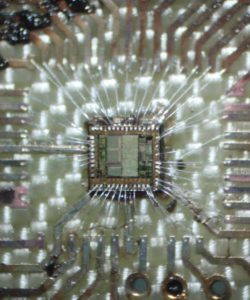Attack Texas Instrument TMS320F28075 DSP Microcontroller
The TMS320F28075 central arithmetic logic unit (CALU) implements a wide range of arithmetic and logical functions, the majority of which execute in a single clock cycle before Attack Texas Instrument TMS320F28075 DSP Microcontroller. This ALU is referred to as central to differentiate it from a second ALU used for indirect-address generation called the auxiliary register arithmetic unit (ARAU).
Once an operation is performed in the CALU, the result is transferred to the accumulator (ACC) where additional operations, such as shifting, can occur. Data that is input to the CALU can be scaled by ISCALE when coming from one of the data buses (DRDB or PRDB) or scaled by PSCALE when coming from the multiplier only after Clone Microcomputer IC Microchip PIC16C54A.
The CALU is a general-purpose arithmetic/logic unit that operates on 16-bit words taken from data memory or derived from immediate instructions. In addition to the usual arithmetic instructions, the CALU can perform Boolean operations for the purpose of Pull Microcontroller Chip Motorola MC68HC11A0FN3, facilitating the bit manipulation ability required for a high-speed controller.
One input to the CALU is always provided from the accumulator, and the other input can be provided from the product register (PREG) of the multiplier or the output of the scaling shifter (that has been read from data memory or from the ACC) . After the CALU has performed the arithmetic or logical operation, the result is stored in the accumulator in order to Crack MCU IC P87C51X2BBD.
The TMS320F28075 devices support floating-point operations for applications requiring a large dynamic range. The NORM (normalization) instruction is used to normalize fixed-point numbers contained in the accumulator by performing left shifts.
The four bits of the TREG define a variable shift through the scaling shifter for the LACT/ADDT/SUBT (load/add to /subtract from accumulator with shift specified by TREG) instructions. These instructions are useful in floating-point arithmetic where a number needs to be denormalized — that is, floating-point to fixed-point conversion to achieve the purpose of Break IC. They are also useful in execution of an automatic gain control (AGC) going into a filter. The BITT (bit test) instruction provides testing of a single bit of a word in data memory based on the value contained in the four LSBs of TREG.


